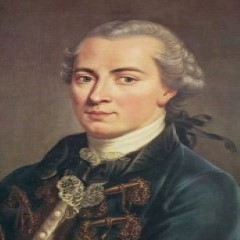Problem Sets Complete Solution
Problem Sets
1. Consider an economy described by the following Keynesian Cross model
(KCM):
AE = C + I + G; (1) C = 1, 625 + 0.625(Y − T ); (2) T = 1, 000 + 0.2Y ;
(3) I = 2, 250 − 250r; and 4) G = 2, 500. (5)
Assume that the interest rate, r, is determined in the money (assets) market in the economy and is equal to five percent—that is, r = 5. Assume further that r is exogenous to the KCM above.
a. Derive the aggregate planned expenditure function. [Hint: Use the information above, to derive the implied relationship between the aggregate planned spending, AE, and the national income, Y.
b. Derive the equilibrium level of national income for the economy. De- termine the government budget balance, B(≡ T − G), at the equilibrium level of national income. Does the government in the economy run a budget surplus or a deficit? Please be specific.
c. Suppose the government spending, G, in the economy rises by 1,000.
Determine the effects of the increase in G on the equilibrium level of national income and the government budget balance? Determine the value of the government spending multiplier for this economy?
d. Suppose that instead of increasing its spending, the government re- duces taxes at all levels of income so that the tax function, specified by equation (3) above, reduces to:
T = 0.2Y (6) Determine the effects of the reduction in taxes on the equilibrium
level of national income and the government budget balance? What
is the implied value of the tax multiplier in this economy? [5 marks]
e. In view of the results obtained in parts 1c and 1d, would you say that a tax cut is more effective (in raising national income) than an increase in government spending? Why or why not? How would you explain the difference in the (relative) effectiveness of a tax cut and an increase in government spending in raising the equilibrium level of national income? Please be specific.
2. Reconsider the economy above. Suppose, in addition to the goods market, the economy has a money market which is described by the following equations.
(M/P )d = Y − 1, 000r; (7)
M = 40, 000; and (8)
P = 10. (9)
Assume that the level of national income, Y , is determined in the goods market in the economy, characterized by the KCM above, and is equal to
9,000. Assume further that Y is exogenous to the above money market.
a. Determine the equilibrium interest rate, r.
b. Suppose that the price level, P , remains at 10, but the central bank of the economy decides to reduce the money supply, M , by 25 percent. Determine the new equilibrium interest rate.
c. Now suppose that both M and P in the economy remain at their initial values 40,000 and 10, respectively. However, due to an expan- sionary fiscal policy implemented by the government in the economy, Y rises to 11,000. Determine the new equilibrium interest rate. Ex- plain why would an increase in Y , raise r in the money market? Please be specific.
3. Once again, consider the economy with the goods market and money market characterized by the equations in problems 1 and 2 above. Con- tinue to assume that initially, G = 2, 500; M = 40, 000; and P = 10 in the economy.
a. Derive the I S and LM equations for this economy. [Hint: Use equa- tions (1) – (5) to derive the I S equation, and equations (7) – (9) to derive the LM equation.] Determine the equilibrium income, Y , and interest rate, r.
b. Assume that both M and P are held at their initial values 40,000 and 10, respectively. Assume further that in an attempt to raise the equilibrium level of national income, the government in the economy increases its spending to 3,500. Determine the new equilibrium level of income and the interest rate. [Hint: Recall that the I S equation changes following a change in government spending. Therefore you will need to derive the new I S equation first!] What is the implied value of the government spending multiplier in this case?
c. Compare the value of the government spending multiplier obtained in part 1c with that obtained in part 3b above. How would you explain the difference in the two values? Please be specific.
d. Now suppose that both G and P remain at their initial values 2,500 and 10, respectively. However, the central bank of the economy reduces M by 25 percent. Determine the new equilibrium values of Y and r. [Hint: Recall that the LM equation changes following a change in the money supply. Therefore you will need to derive the new LM equation first!] Please explain how a change in the money supply (a reduction in this case) alters the equilibrium level of national income.
e. Compare the equilibrium interest rate obtained in part 2b with that obtained in part 3d above. How would you explain the difference in the two values? Please be specific.
f. Now suppose that both G and M remain at their initial values 2,500 and 40,000, respectively. However, the price level, P , in the economy doubles—that is, P rises to 20. Determine the new equilibrium values of Y and r. [Hint: Recall that the LM equation also changes when the price level changes. Therefore you will need to derive the new LM equation first!] Please explain how the increase in the price level alters the equilibrium level of national income in this economy.
g. In view of your answers to part 3f above, what would you conclude about the relationship between the aggregate demand and the price level? Please be specific.
1. Consider an economy described by the following Keynesian Cross model
(KCM):
AE = C + I + G; (1) C = 1, 625 + 0.625(Y − T ); (2) T = 1, 000 + 0.2Y ;
(3) I = 2, 250 − 250r; and 4) G = 2, 500. (5)
Assume that the interest rate, r, is determined in the money (assets) market in the economy and is equal to five percent—that is, r = 5. Assume further that r is exogenous to the KCM above.
a. Derive the aggregate planned expenditure function. [Hint: Use the information above, to derive the implied relationship between the aggregate planned spending, AE, and the national income, Y.
b. Derive the equilibrium level of national income for the economy. De- termine the government budget balance, B(≡ T − G), at the equilibrium level of national income. Does the government in the economy run a budget surplus or a deficit? Please be specific.
c. Suppose the government spending, G, in the economy rises by 1,000.
Determine the effects of the increase in G on the equilibrium level of national income and the government budget balance? Determine the value of the government spending multiplier for this economy?
d. Suppose that instead of increasing its spending, the government re- duces taxes at all levels of income so that the tax function, specified by equation (3) above, reduces to:
T = 0.2Y (6) Determine the effects of the reduction in taxes on the equilibrium
level of national income and the government budget balance? What
is the implied value of the tax multiplier in this economy? [5 marks]
e. In view of the results obtained in parts 1c and 1d, would you say that a tax cut is more effective (in raising national income) than an increase in government spending? Why or why not? How would you explain the difference in the (relative) effectiveness of a tax cut and an increase in government spending in raising the equilibrium level of national income? Please be specific.
2. Reconsider the economy above. Suppose, in addition to the goods market, the economy has a money market which is described by the following equations.
(M/P )d = Y − 1, 000r; (7)
M = 40, 000; and (8)
P = 10. (9)
Assume that the level of national income, Y , is determined in the goods market in the economy, characterized by the KCM above, and is equal to
9,000. Assume further that Y is exogenous to the above money market.
a. Determine the equilibrium interest rate, r.
b. Suppose that the price level, P , remains at 10, but the central bank of the economy decides to reduce the money supply, M , by 25 percent. Determine the new equilibrium interest rate.
c. Now suppose that both M and P in the economy remain at their initial values 40,000 and 10, respectively. However, due to an expan- sionary fiscal policy implemented by the government in the economy, Y rises to 11,000. Determine the new equilibrium interest rate. Ex- plain why would an increase in Y , raise r in the money market? Please be specific.
3. Once again, consider the economy with the goods market and money market characterized by the equations in problems 1 and 2 above. Con- tinue to assume that initially, G = 2, 500; M = 40, 000; and P = 10 in the economy.
a. Derive the I S and LM equations for this economy. [Hint: Use equa- tions (1) – (5) to derive the I S equation, and equations (7) – (9) to derive the LM equation.] Determine the equilibrium income, Y , and interest rate, r.
b. Assume that both M and P are held at their initial values 40,000 and 10, respectively. Assume further that in an attempt to raise the equilibrium level of national income, the government in the economy increases its spending to 3,500. Determine the new equilibrium level of income and the interest rate. [Hint: Recall that the I S equation changes following a change in government spending. Therefore you will need to derive the new I S equation first!] What is the implied value of the government spending multiplier in this case?
c. Compare the value of the government spending multiplier obtained in part 1c with that obtained in part 3b above. How would you explain the difference in the two values? Please be specific.
d. Now suppose that both G and P remain at their initial values 2,500 and 10, respectively. However, the central bank of the economy reduces M by 25 percent. Determine the new equilibrium values of Y and r. [Hint: Recall that the LM equation changes following a change in the money supply. Therefore you will need to derive the new LM equation first!] Please explain how a change in the money supply (a reduction in this case) alters the equilibrium level of national income.
e. Compare the equilibrium interest rate obtained in part 2b with that obtained in part 3d above. How would you explain the difference in the two values? Please be specific.
f. Now suppose that both G and M remain at their initial values 2,500 and 40,000, respectively. However, the price level, P , in the economy doubles—that is, P rises to 20. Determine the new equilibrium values of Y and r. [Hint: Recall that the LM equation also changes when the price level changes. Therefore you will need to derive the new LM equation first!] Please explain how the increase in the price level alters the equilibrium level of national income in this economy.
g. In view of your answers to part 3f above, what would you conclude about the relationship between the aggregate demand and the price level? Please be specific.
Problem Sets Complete Solution
AE= C+I+G
I= 2250-250*5= 1000
AE= 1625+.625(Y - 0.2Y) +1000+2500
AE = 5125 - 0 .5Y
So Y= 5125-.5Y
Y= 5125/.5 = 10250





No related questions were found.
Online Users
-
 Tutormaster
Today
Tutormaster
Today

A+ - Thank you!
Thanks for the positive feedback!